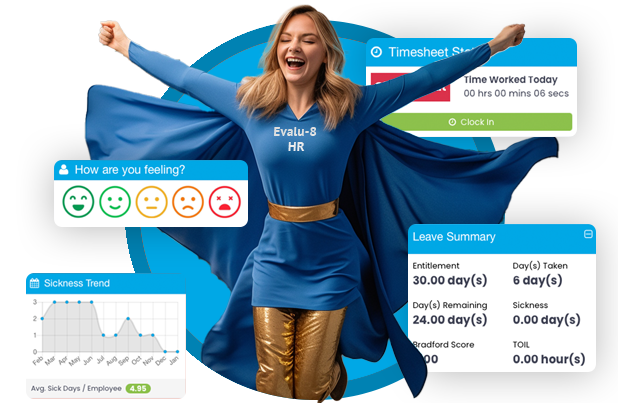In the realm of human resource management (HRM), there are three critical components that form the foundation of effective HR practices. Known as the 3 Ps of HRM, these elements encompass People, Process, and Performance. Understanding the significance of each P and their interrelation is essential for organizations seeking to optimize their HR strategies and drive success.
Understanding the Concept of 3 Ps in Human Resource Management
Human resource management is a multifaceted discipline that aims to maximize employee performance and enhance overall organizational efficiency. The 3 Ps framework serves as a guiding principle for HR professionals, providing a comprehensive approach to managing and developing a talented workforce.
When it comes to effective HR practices, a combination of the 3 Ps: People, Process, and Performance, plays a crucial role. These elements are interconnected and have a significant impact on each other. By understanding how they interact and influence one another, organizations can create a harmonious and productive work environment.
The Importance of the 3 Ps in HRM
Effective human resource management requires a holistic view that takes into account all aspects of employee management. The 3 Ps framework offers just that, ensuring that organizations consider every element necessary for successful HR practices.
First and foremost, People are at the core of HRM. They are the most valuable asset of any organization. HR departments are responsible for various people-related functions, such as employee recruitment, selection, and onboarding. Additionally, HR professionals play a vital role in training and development, ensuring that employees have the necessary skills and knowledge to perform their roles effectively.
The process is another key component of the 3 Ps framework. HR processes encompass a wide range of activities, including performance management, compensation and benefits administration, and employee relations. These processes provide structure and guidance for both HR professionals and employees, ensuring consistency and fairness in decision-making.
Lastly, Performance is a critical aspect of HRM. HR professionals are responsible for fostering a culture of high performance within the organization. This involves setting clear performance expectations, providing regular feedback and coaching, and recognizing and rewarding outstanding performance. By focusing on performance, organizations can drive individual and collective success.
"Within the realm of HRM's 3 Ps, the path to comprehensive success unfolds. People, Processes, and Performance converge to create a symphony of excellence. Just as each note contributes to a harmonious melody, Evalu-8 HR software acts as the conductor, orchestrating these elements into a seamless performance. With Evalu-8, we empower HR professionals to elevate People, optimise Processes, and amplify Performance, leading organisations toward a crescendo of achievement." -
Fraser Scraggs, Software Advisor, Evalu-8 Tweet
The Evolution of the 3 Ps in HRM
The concept of the 3 Ps in HRM has evolved over time to meet the changing needs of the modern workforce. Initially, the focus was primarily on People. HR departments were primarily concerned with attracting and retaining talented individuals who could contribute to the organization’s success. Recruitment strategies, training programs, and employee development initiatives were the primary areas of focus.
However, as organizations grew more complex and competitive, the importance of Process and Performance as integral components of HRM became increasingly apparent. HR professionals realized that effective processes were necessary to ensure consistency and fairness in decision-making. They began implementing structured performance management systems to set clear expectations, evaluate employee performance, and identify areas for improvement.
Moreover, the emphasis on Performance in HRM grew stronger. Organizations recognized that high-performing employees were crucial for achieving business objectives. HR departments started implementing performance-based reward systems, providing incentives to motivate employees and drive exceptional performance. This shift in focus led to a more results-oriented approach to HRM.
In conclusion, the 3 Ps framework in HRM encompasses People, Process, and Performance. It provides a comprehensive approach to managing and developing a talented workforce. By understanding the importance of each element and how they have evolved over time, organizations can effectively maximize employee performance and enhance overall organizational efficiency.
An In-depth Look at the First P: People
People are at the heart of any organization, and effective HRM recognizes the pivotal role they play in achieving organizational objectives. HR professionals are responsible for attracting top talent, nurturing their skills, and ensuring their engagement and satisfaction within the workplace.
When it comes to the role of people in HRM, it goes beyond simply filling positions. People are the driving force behind an organization’s success. HR managers must focus on recruiting individuals who possess the required skills and align with the company’s values, goals, and culture. By hiring the right people and creating an inclusive and supportive work environment, organizations can cultivate a talented and motivated workforce.
But how can organizations effectively manage their people? There are various strategies that can be implemented to enhance people management practices. One such strategy is providing ongoing training and development opportunities. By investing in the growth and development of employees, organizations not only enhance their skills but also improve their job satisfaction and retention rates.
In addition to training and development, establishing clear career paths is crucial for effective people management. When employees have a clear understanding of their career progression within the organization, they are more likely to be motivated and engaged. This can be achieved through regular performance evaluations, goal setting, and providing opportunities for advancement.
A culture of continuous learning is another important aspect of effective people management. HR professionals should strive to create an environment where learning is encouraged and supported. This can be done through initiatives such as lunch and learn sessions, online learning platforms, and knowledge-sharing programs. By fostering a culture of continuous learning, organizations can ensure that their employees stay up-to-date with industry trends and best practices.
Lastly, open and transparent communication is essential for effective people management. HR professionals should establish a communication channel where employees feel comfortable expressing their thoughts, concerns, and ideas. This can be achieved through regular team meetings, suggestion boxes, and anonymous feedback mechanisms. By creating an open and transparent communication channel, organizations can ensure that employees feel valued and engaged.
Exploring the Second P: Process
Process refers to the systems, methods, and procedures that HR departments establish to streamline their operations. By implementing efficient processes, organizations can enhance HR effectiveness, minimize errors, and improve overall productivity.
When it comes to HR management (HRM), process plays a significant role in ensuring a consistent and systematic approach to tasks and responsibilities. Effective processes encompass various areas, including recruitment, onboarding, performance evaluation, and employee development. By defining and optimizing these processes, HR professionals can minimize administrative burdens and focus on strategic initiatives.
Let’s take a closer look at the significance of process in HRM:
The Significance of Process in HRM
Effective processes are crucial in HRM as they provide a structured framework for managing HR activities. These processes ensure that every step is followed consistently, leading to greater efficiency and effectiveness. For example, in the recruitment process, having a well-defined system for sourcing, screening, and selecting candidates helps HR professionals find the right talent for the organization.
Moreover, well-established processes in HRM contribute to better compliance with legal and regulatory requirements. By following standardized procedures, HR departments can ensure that they are adhering to applicable laws and regulations, reducing the risk of legal issues.
Additionally, having clear processes in place helps HR professionals manage expectations and maintain transparency with employees. When employees understand the steps involved in various HR activities, such as performance evaluations or employee development programs, they feel more informed and engaged in the process.
Now that we understand the significance of process in HRM, let’s explore some best practices for streamlining HR processes:
Best Practices for Streamlining HR Processes
Streamlining HR processes involves a combination of technology and innovative thinking. HR departments can leverage automation and digital tools to reduce manual tasks and improve efficiency. For example, implementing self-service portals allows employees to access and update their information, reducing the need for HR staff to handle routine administrative tasks.
Efficiency in HR is more than a goal; it's a journey guided by innovation and technology. By embracing streamlined processes, organizations pave the way for growth. Just as the river finds its course, Evalu-8 HR software becomes the compass, navigating this transformation. From self-service portals to automated workflows, Evalu-8 empowers HR departments to unlock their true potential and steer toward success.
- Robbie Rouse, Evalu-8 Software Director Tweet
Furthermore, online training modules can be integrated into the onboarding process, allowing new hires to access training materials at their own pace. This not only saves time but also ensures that employees receive consistent and standardized training.
Another best practice for streamlining HR processes is the use of integrated HR software. This software consolidates various HR functions, such as payroll, benefits administration, and performance management, into a single platform. By centralizing these processes, HR professionals can access real-time data, automate workflows, and generate accurate reports more efficiently.
Moreover, HR departments can adopt innovative thinking to identify areas for process improvement. Conducting regular process audits and seeking feedback from employees can help uncover bottlenecks or inefficiencies that can be addressed. By continuously evaluating and refining HR processes, organizations can stay agile and adapt to changing business needs.
In conclusion, process plays a vital role in HRM by providing a structured framework for managing HR activities. Effective processes ensure consistency, compliance, and transparency, allowing HR professionals to focus on strategic initiatives. By leveraging technology and innovative thinking, organizations can streamline HR processes, enhance efficiency, and ultimately drive overall organizational success.
Unpacking the Third P: Performance
Performance management is a critical aspect of HRM, as it involves assessing, rewarding, and enhancing employee performance. By implementing effective performance management strategies, organizations can foster a culture of excellence, unlock employee potential, and drive business success.
When it comes to performance, HRM plays a crucial role in shaping the success of an organization. It is not just about evaluating employees’ performance but also about understanding its impact on the overall functioning of the company. By setting clear performance expectations and providing ongoing feedback, HR departments can identify areas for improvement and design targeted training and development programs.
Effective performance management is not a one-time event; it is an ongoing process. HR professionals work closely with managers and employees to ensure that performance goals are aligned with the organization’s objectives. By regularly monitoring and assessing performance, HRM can identify strengths and weaknesses within the workforce, enabling them to make informed decisions.
The Impact of Performance on HRM
Performance is closely linked to organizational success. When employees perform at their best, the entire organization benefits. HR departments understand the significance of performance and its impact on achieving business goals. They play a pivotal role in creating a performance-driven culture within the organization.
By setting clear performance expectations, HRM helps employees understand what is expected of them and how their performance will be evaluated. This clarity not only helps employees focus on their goals but also enables HR professionals to provide targeted support and resources to help them succeed.
Furthermore, performance management plays a vital role in identifying high-performing employees and recognizing their contributions. HR professionals use various tools and techniques to evaluate performance, such as performance appraisals, 360-degree feedback, and peer evaluations. These assessments provide valuable insights into an employee’s strengths and areas for improvement, enabling HRM to make informed decisions regarding promotions, rewards, and career development opportunities.
Techniques for Enhancing Employee Performance
Enhancing employee performance requires a multifaceted approach. HR professionals can utilize various techniques to improve performance levels and foster a culture of continuous improvement.
One such technique is goal-setting. By setting clear and achievable goals, HRM helps employees focus their efforts and align their actions with the organization’s objectives. This not only provides employees with a sense of direction but also enables HR professionals to measure and evaluate performance effectively.
Coaching and mentoring are also essential techniques for enhancing employee performance. HR departments can provide employees with guidance and support, helping them develop their skills and overcome challenges. By offering constructive feedback and personalized development plans, HR professionals can empower employees to reach their full potential.
In addition to goal-setting and coaching, performance reviews play a crucial role in enhancing employee performance. By conducting regular performance evaluations, HRM can identify areas for improvement and provide employees with constructive feedback. These reviews also serve as an opportunity to recognize and reward high-performing employees, fostering a sense of achievement and motivation.
Furthermore, offering rewards and recognition programs can further motivate employees and foster a sense of achievement and loyalty. HR departments can implement incentive programs, such as bonuses, promotions, and public recognition, to acknowledge and appreciate employees’ exceptional performance. These programs not only boost morale but also create a positive work environment where employees feel valued and motivated to excel.
In conclusion, performance management is a critical aspect of HRM that directly impacts organizational success. By setting clear performance expectations, providing ongoing feedback, and utilizing various techniques for enhancing employee performance, HR professionals can unlock the full potential of their workforce and drive business success.
The Interrelation of the 3 Ps in HRM
When examining the 3 Ps of HRM – People, Process, and Performance – it is important to recognize the deep interrelation and influence they have on each other. These interconnected components rely on one another to create a harmonious and productive work environment.
Let’s delve deeper into how People, Process, and Performance influence each other:
1. The Power of People
Attracting and retaining top talent is crucial for establishing a strong workforce foundation. Having skilled and motivated individuals who align with the organization’s values and goals can drive success. These people bring diverse perspectives, expertise, and ideas to the table, fostering innovation and growth.
Moreover, a positive work culture that values and respects its employees can lead to higher job satisfaction, increased engagement, and lower turnover rates. HR professionals play a vital role in ensuring that the right people are recruited, onboarded effectively, and continuously supported throughout their journey within the organization.
2. The Importance of Process
While having talented individuals is essential, the successful integration of these individuals into the organization requires well-defined processes. HR processes encompass various aspects, such as recruitment and selection, onboarding, training and development, performance management, and employee relations.
By establishing clear and efficient processes, HR professionals can ensure that employees have a smooth transition into their roles, receive the necessary training and support, and understand their performance expectations. Effective processes also promote consistency, fairness, and transparency, which are crucial for fostering a positive work environment.
3. The Drive for Performance
Performance management is a critical aspect of HRM that focuses on optimizing individual and organizational outcomes. By implementing effective performance management strategies, HR professionals can help employees set clear goals, provide regular feedback and coaching, and recognize and reward exceptional performance.
When employees feel supported and empowered to perform at their best, it not only enhances their motivation and job satisfaction but also contributes to overall organizational success. HR professionals play a pivotal role in designing and implementing performance management systems that align with the organization’s objectives and values.
In conclusion, the interrelation between People, Process, and Performance in HRM is undeniable. By attracting and retaining top talent, establishing well-defined processes, and optimizing performance management strategies, HR professionals can create a work environment that fosters productivity, engagement, and growth.
In conclusion, the 3 Ps of human resource management—People, Process, and Performance—are crucial elements that organizations must prioritize to optimize their HR strategies. By understanding the significance of each P and their interrelation, organizations can create a harmonious and productive work environment, ultimately driving success and achieving their goals.
See the quick demo now
Before we show you the quick demo, we need to make sure you are a real person.

More from the HR Blog
We are thrilled to announce that Evalu-8 HR has been...
The anticipation is palpable as we count down to one...
Flextime, also known as flexible working hours, is a working...
In the realm of working patterns, the term ‘Tandem Scheduling’...





